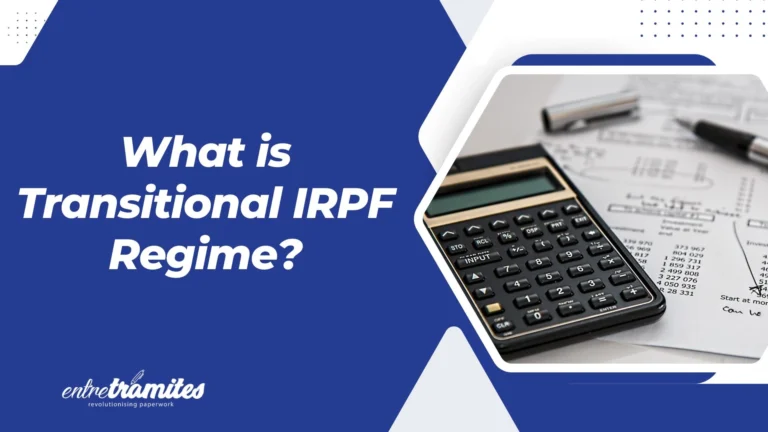What is Form 720?
Form 720 (known as “Modelo 720” in Spanish) is an informative declaration of assets and rights located abroad that must be filed annually.
According to the current regulations, Form 720 has some main objectives, which can be summarized in the following items:
- Inform the Spanish Administration of real estate located abroad and the existing rights over them.
- In relation to the previous point, notify the status of the accounts that are available in financial entities located outside Spanish territory. Finally, information on insurance, income, securities or rights obtained abroad is a substantial part of the return.
Form 720 also aims to:
- Report on accounts in financial entities located abroad.
- Report on real estate located abroad and the rights over these properties.
- Report on securities, rights, insurances and income deposited, managed or obtained abroad.
Are you in a hurry? You can hire our service directly here:

Tutorial Video: How to Fill Out the Modelo 720?
What are foreign assets?
Foreign assets are:
- Bank or credit institution accounts located abroad that have Spanish owners, representatives, authorized persons or beneficiaries. Also, those over which Spanish owners, representatives, authorized persons or beneficiaries have powers of disposition.
- Titles, assets, securities or capital rights abroad of all types of Spanish entities. Also life or disability insurance, in addition to life and temporary annuities.
- Real estate and rights over real estate.
Some examples:
- Stocks and similar.
- Bonuses and loans.
- Bank accounts outside Spanish borders.
- Investment companies and funds.
- Property, usufruct, time-sharing and similar.
- Life or disability insurance (provided that the insurance company from which they have contracted them is located abroad).
What should be included in Form 720?
As established by the Tax Agency, the minimum penalty for failure to comply with a single reporting obligation is €10,000.
The obligation, as indicated by AEAT, is extended to those holders of participations or shares in the capital stock of collective investment institutions, of which they are holders and which are deposited outside Spain. A special mention should be made in the case of being the beneficiary of annuities or temporary annuities, contracted with entities located abroad, as well as life or disability insurance policies of which they are policyholders.
Who is required to submit Form 720?
The responsibility to submit Form 720 falls on those owners, representatives, authorized persons, beneficiaries, persons or entities with powers of disposition or real owners, to report on accounts in financial institutions located abroad. To this maxim, it is also necessary to add the obligation to report on securities, rights, income and insurance obtained outside Spanish territory, as well as foreign real estate/rights over real estate.
At this point, a fundamental element must be added: the obligation is limited by an amount because there will be no such obligation in the event that the asset or the sum of assets does not exceed €50,000. On the other hand, focusing on the accounts in financial institutions, the submission of Form 720 will also be mandatory in the event that the sum of the balances (or the average balances) as of December 31st exceeds that figure.
If the filing is made for the first time, the obligation for the following years is only described in the event that the average balance has been subject to an increase of more than €20,000, taking the last submitted declaration as a reference.
How is Form 720 submitted?
The submission is made electronically. To carry it out, it is necessary identification with an electronic signature (digital certificate or electronic DNI) or through the Cl@ve PIN identification system (but only for natural persons). In the event that the declarant does not have an electronic signature, the person in charge of submitting it must have the authorization to present declarations on behalf of third parties so, in this case, they must be registered as a collaborator or as a representative.
How to fill out Form 720?
The steps to fill out Form 720 are the following:
- Enter the website of the Tax Agency and select the Form to submit: “Modelo 720. Declaración Informativa. Declaración sobre bienes y derechos situados en el extranjero”. Then, send the corresponding declaration with the electronic signature generated by selecting the certificate previously installed in the browser for this purpose.
- Click on “Continue” to manually fill out the form or “Import” to choose a file created with the same form or with a program outside the AEAT and that follows the registration design of Form 720.
- Fill out the boxes marked with an asterisk as they are mandatory. The boxes in the fields “Summary of the data included in the return” are auto-filled with the data included in the rest of the return. The fields that are mandatory to declare are:
- Code for the condition of the declarant.
- Code for the type of asset or right.
- Subcode for the asset or right
- Country code
- And depending on the type of asset or right you will have to fill out certain boxes. The basic information to be reported in each case has been previously reported in section 4.
- Each time you press + you can create a new asset or right and add it.
- Once the declaration has been completed, you will have to check that there are no errors by clicking on the “V” button, and then you will proceed to sign and submit the declaration.
- If you already clicked on «Validate» and some errors appeared, a description of the error or warning and the “Go to Error” or “Go to Warning” button will be displayed, which will direct you to the corresponding field to be corrected.
- If the submission is correct you will see a page with an embedded PDF that contains a first page with the information of the submission (register entry number, Secure Verification Code, receipt number, date and time of the submission, and data of the presenter) and, on the following pages, the full copy of the declaration.
When should it be submitted?
The deadline for submitting Form 720 is stipulated between January 1st and March 31st of the year following that to which the reporting exercise refers.
Sanctions on Form 720
As with any other form, submitting Form 720 incorrectly (or not submitting it at all) entails tax infringements accompanied by a monetary fine.
The fine can be of 3 types:
- If there is a clear obligation to present Form 720 but, nevertheless, it is not done, the pecuniary fine is set at €5,000 for each piece of data or set of data that should have been declared but has not been provided. The minimum in this fine will be €10,000 for each of the three sets of assets and rights established in this form.
- If Form 720 has been submitted, but has been done after the deadline, we are faced with an infringement of a different nature. The penalty, in this case, will be €100 for each piece of data or set of data submitted, with a minimum of €1,500.
What is clear is that both cases can be easily avoided and that it is better to learn all about Form 720 to file it correctly and avoid surprises before the Treasury.
CJUE judgment on Form 720
In January 2022, the ruling of the CJEU on Form 720 meant a paradigm shift by declaring this form and its penalties as “contrary to Union Law” in line with the EC report of 2017, which had already declared incompatible some of the obligations to declare assets and rights abroad for tax residents in Spain.
The CJEU ruling obliges the Spanish State to modify the legislation in accordance with the European criterion, dictating that the free movement of capital in Europe is infringed upon. It is considered that the options to invest in other member states of the EU are discouraged or limited and that there is a difference between the obligations and penalties relating to assets abroad with respect to those located in Spain, which generates discriminatory treatment.
The set of penalties, which can accumulate a fine of 150% of taxes on the amounts, with fixed amount fines for omitted, inaccurate, incomplete or false data (€5,000 per data or set of data with a minimum of €10,000 and €100 in the case of data outside the deadline with a minimum of €1,500) is considered excessive by the CJEU for a mere informative obligation.
Would you prefer the help of a professional in the field?
Leave the filing and submission of your Form 720 in expert hands. Contact us and our team of experts will help you with your procedures.
In Entre Trámites we offer various services of management, advice and support in bureaucratic processes for state aid, including loans and grants for freelancers, SMEs and other companies. You can schedule a free consultation with us or simply text our WhatsApp to know more information.





